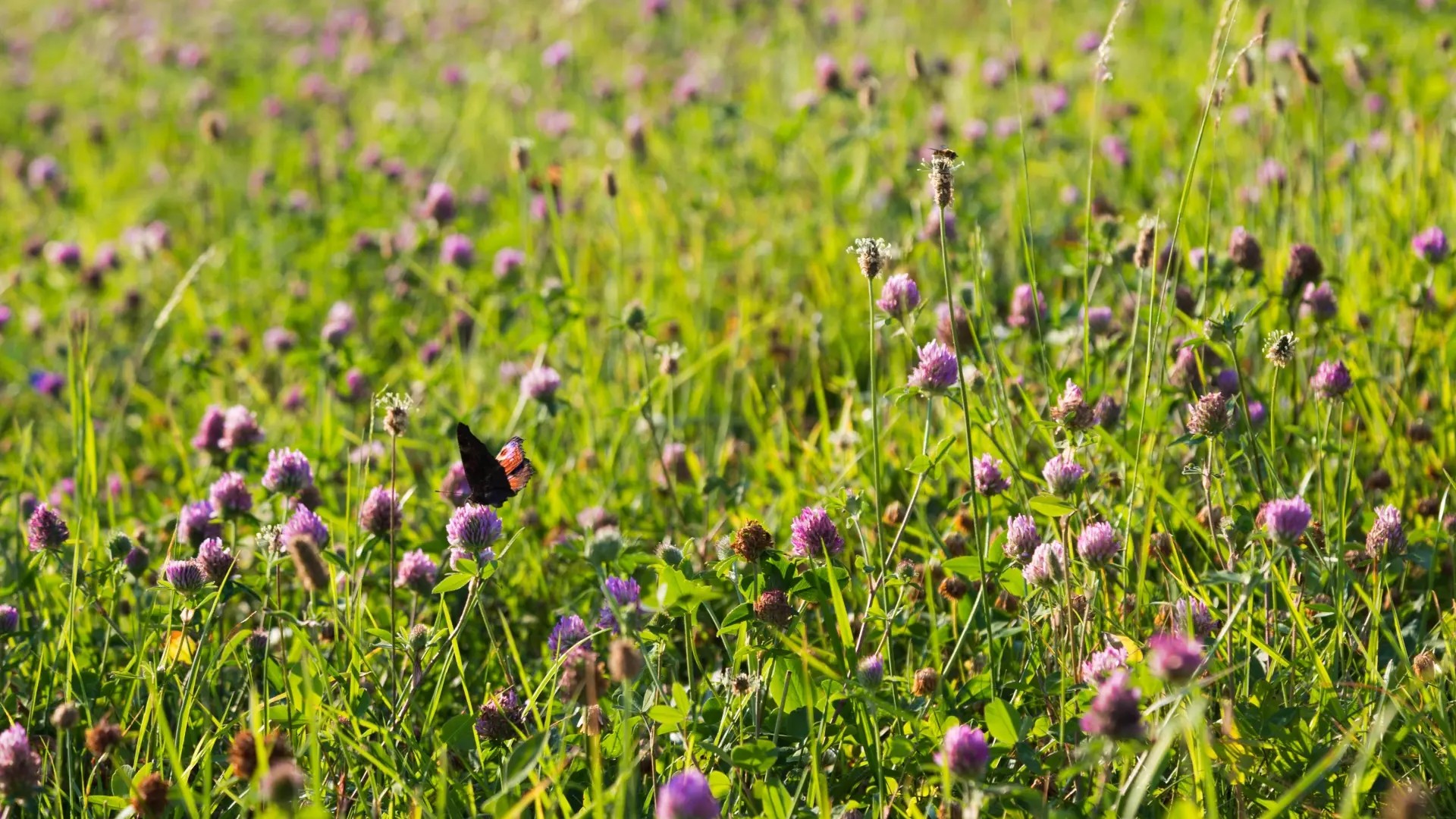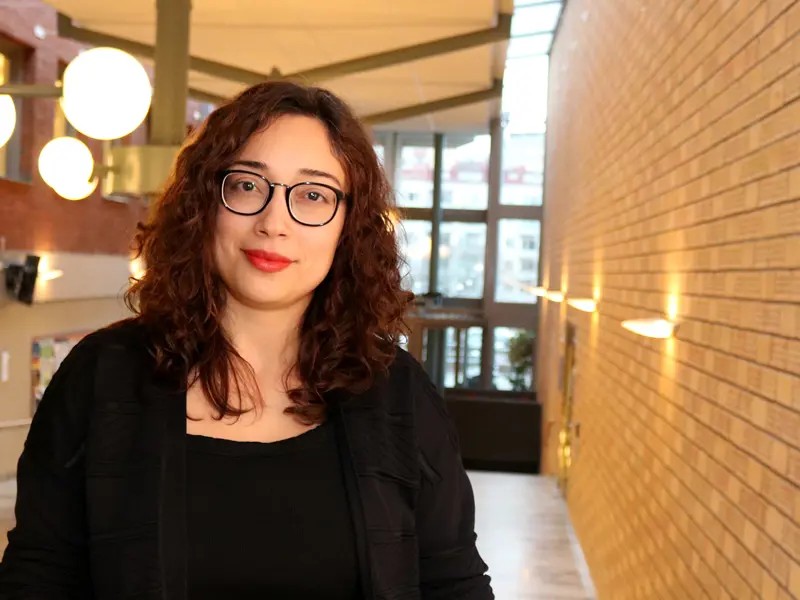If cereal cultivation alternates with the cultivation of grass and clover, Sweden could produce enough protein to replace all soy feed that is currently imported, as well as 13 percent of the imported natural gas. This would be made possible by converting the grass into protein feed and bioenergy in so-called biorefineries. At the same time, the farmland becomes more productive and binds more carbon dioxide from the atmosphere. This is shown by a new study from Chalmers.

A biorefinery is a facility that manufactures products such as chemicals, energy and materials from a bio-based raw material. Sebnem Yilmaz Balaman, who is a researcher at Chalmers University of Technology, has studied how biorefineries that refine grass and clover into protein feed and bioenergy can become economically sustainable for Swedish agriculture.
“There has been a strong development in this technology has in test facilities in recent years and it is soon ready for deployment”, says Sebnem Yilmaz Balaman, who has constructed the comprehensive model on which the study is based.
There are great advantages for both the environment and crop production if you introduce temporary grasslands with grass and clover, where cereals such as wheat and barley dominate. Grass cultivation contributes to the soil sequestering more carbon dioxide from the atmosphere and improves the soil's fertility, while at the same time reducing plant nutrient leakage and the use of pesticides. But it is important to find new areas of use for the biomass produced by the grasslands. This is where biorefineries come in, as they make it possible to convert grass and clover, which have a high protein content, into high-quality animal feed that can reduce our dependence on imported soy protein. In addition, residues from protein production can be used for, among other things, biogas production.
Comprehensive model
The function and benefits of biorefinery technology have been established in previous studies. Commercial facilities are located in for example Denmark and Germany. Sebnem Yilmaz Balaman's model includes a wide range of parameters, such as how much of the arable land is needed and available for grasslands, how much the farmer needs to be paid for the grass for the grasslands to sustain itself and how much the biorefineries are able to pay for the raw material, as well as how long transports that are reasonable between growers and biorefineries.
The function and benefits of biorefinery technology have been established in previous studies. Commercial facilities are located in for example Denmark and Germany. Sebnem Yilmaz Balaman's model includes a wide range of parameters, such as how much of the arable land is needed and available for grasslands, how much the farmer needs to be paid for the grass for the grasslands to sustain itself and how much the biorefineries are able to pay for the raw material, as well as the effect of transport distances between farmer and biorefineries.
“It is not easy to construct a mathematical model with raw material producers, logistics, biorefineries and consumers - who also interact with each other in different ways. But overall, our model represents the entire system”, she says.
According to the model, the conditions for biorefineries will be best if grasslands are established widely - on up to 30 percent of the arable land currently used for grain cultivation. Under those conditions ten larger biorefineries and a handful of smaller ones could be operated successfully in the southern half of Sweden. That part of the land has good conditions to start with, featuring large areas of cereal cultivation where an introduction of grasslands would be a good fit.

“With such a widespread establishment of biorefineries, we could by a good margin replace all imported soy that is currently used as feed, and we would also be able to produce biogas corresponding to 13 percent of the natural gas that is imported into Sweden today”.
In the case of a more limited establishment of grasslands - on up to 10 percent of the arable land that is currently used for grain cultivation – there are conditions for establishing two larger biorefineries, in Västra Götaland and Skåne. To produce grass on land that is now used for cereal cultivation would reduce the total grain area in Sweden, but at the same time lead to improved soil quality and positive effects on yield levels. In addition, the need for soybean cultivation in Europe and Brazil is decreasing.
Many benefits
“All in all, increased grass cultivation and the establishment of green biorefineries would lead to benefits for agriculture, the climate and the environment”, says Sebnem Yilmaz Balaman.
The Chalmers researchers believe that more incentives such as environmental support or new revenue will be needed to get farmers to change their crop rotations and grow raw materials for green biorefineries. They are now working on investigating how to value carbon sinks and reduced need for imported fossil gas and soy protein. The question is high on the agenda now, both in view of climate change and the war in Ukraine, which has increased the demands to quickly produce more fossil-free energy, not least biomethane, within the EU.
More about the research
At the farming school Sötåsen in Töreboda there is a biorefinery that was built as a demonstration plant within the framework of the EU project Green Valleys. The new study, which Sebnem Yilmaz Balaman conducted together with Chalmers colleagues Göran Berndes, professor of biomass and land use, and Christel Cederberg, assistant professor of sustainable agricultural systems, is linked to the same project. The study focuses on the agricultural land in southern and central Sweden and has mapped the conditions for introducing biorefineries in that part of the country. It aims to provide the knowledge base needed when decision-makers consider investing in new systems, new technologies and partially new infrastructure for green biorefineries.
Read the article: Towards multifunctional landscapes coupling low carbon feed and bioenergy production with restorative agriculture: Economic deployment potential of grass-based biorefineries, in the journal Biofpr - Biofuels, Bioproducts & Biorefining.
The article's authors are: Sebnem Yilmaz Balaman, Göran Berndes and Christel Cederberg who work at Chalmers University of Technology, and Håkan Rosenqvist, independent researcher.
Images in the article:
Portrait: Christian Löwhagen, Chalmers.
Cloverfield: George Hodan, Public Domain Pictures
Clover flower: Retro Lenses, Wikimedia Commons
Contact
- Researcher, Stiftelsen Chalmers Industriteknik
